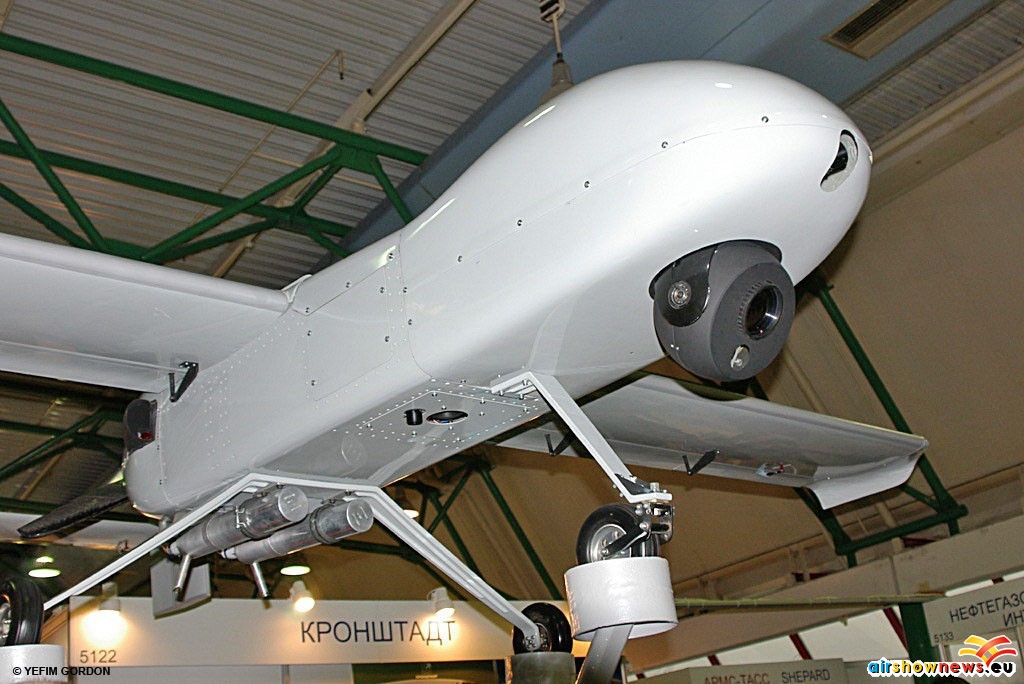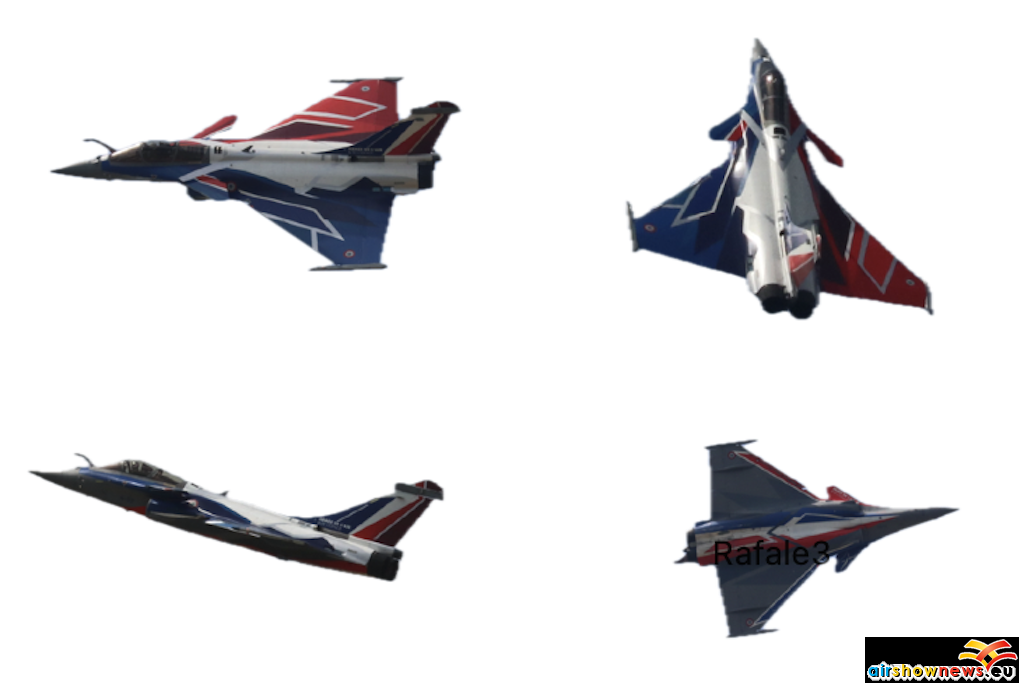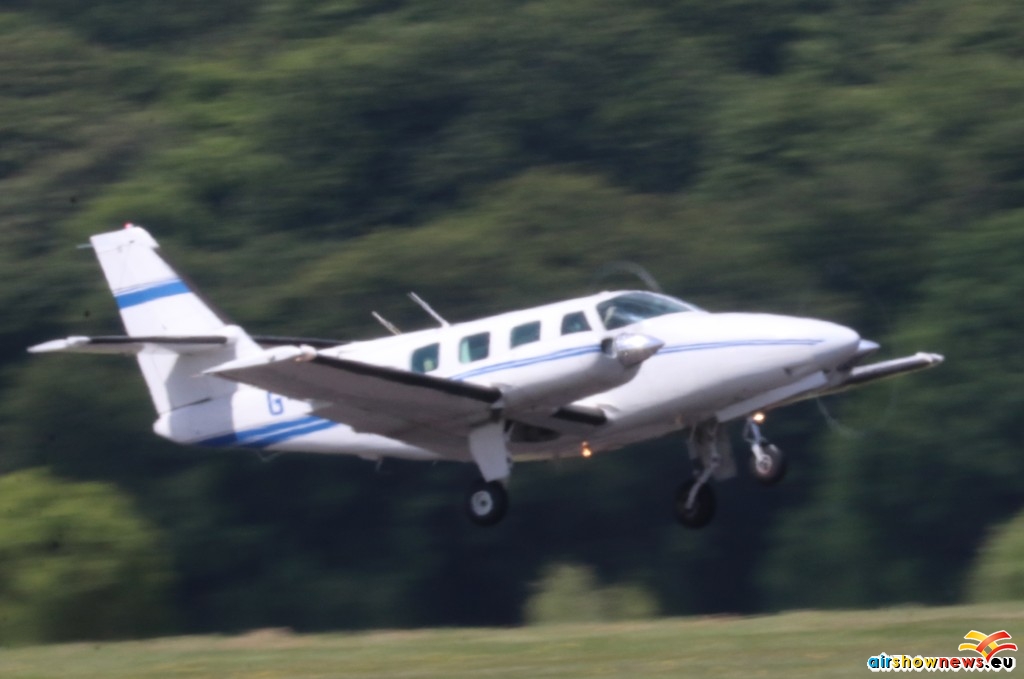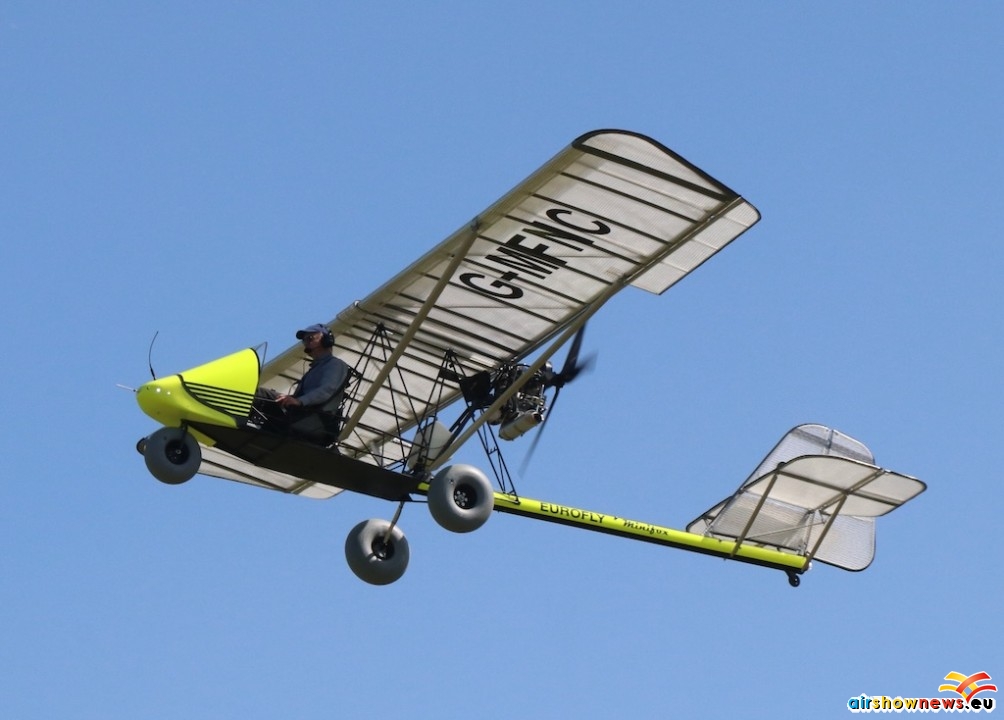In late January 2009 the Crocus Expo Centre in Moscow became the scene for an international forum and an exhibition of unmanned aerial vehicles (UAVs). This exhibition, the third of its kind, bore the name UVS-Tech-2009, UVS standing for Unmanned Versatile Systems. Housed in one of the Expo Centre’s large halls, the exhibition comprised several dozens UAVs of different classes and sizes, ranging from small craft resembling flying models to machines with a wing span of 4 to 5 metres.
Worthy of note among the bigger craft is the Dozo-4 UAV (Dozor translates as picket). It forms a part of an UAV system developed by the Tranzas company from St. Petersburg. This unmanned aircraft featuring a twin-boom layout and powered by a piston engine driving a pusher prop is intended for collecting information about designated objects and areas in the interests of government agencies. The vehicle is capable of staying airborne for up to 10 hours and has a range of some 1,200 km. The information obtained by its sensors is transmitted to ground stations in real time. Russia’s Border Guard Service has displayed interest in this UAV and other designs of Tranzas; there are plans for setting up a special air unit equipped with UAVs within the Border Guard Service.
The Irkut Corporation known for its role in the production of the Be-200 and Yak-130 aircraft presented a whole range of different UAVs, including both fixed-wing and helicopter-type designs. An example of the latter type was the Swiss UAV 45 vehicle developed in co-operation with the Swiss UAV company.
The Aerocon company from the town of Zhukovsky near Moscow showed two small UAVs. One of them was the Inspector-201 vehicle which was intended for monitoring oil and gas pipelines, for forest surveillance , search and rescue operations etc. The vehicle weighing 1.3 kg has a wing span of 0.8 m; it has an endurance of 30 to 40 minutes. The useful load comprises a TV camera, a digital camera for vertical photography, gas sensors and an IR camera.
The well-known helicopter companies – Mil’ and Kamov – are also engaged in the development of the helicopter-type UAVs. One could see among the exhibits the Ka-137 miniature unmanned helicopter and a model of the Mi-34BP – a projected unmanned version of the Mi-34 light helicopter.
An interesting example of the rotary-wing UAVs was the Voron-700 (Voron means Raven) unmanned small helicopter developed at the Moscow Aviation Institute. Its unique design feature was the X-type main rotor.
The Rissa company demonstrated an UAV of an unusual type – the Typhoon TF-2 resembling a “flying saucer”; it featured a lifting rotor configured as a shrouded fan. The same company also showed a more orthodox vehicle – the TH-1 featuring a single-rotor helicopter layout.
One of the exhibits was a UAV intended for combating hail precipitation which may cause damage. Designated A-03 and forming part of the NART system, it was developed by the Antigrad-Avia company in the town of Dubna near Moscow. Measuring 4.5 m in length and weighing 450 kg at take-off, this vehicle is capable of carrying more than 20 containers with an agent which, when dispersed in the clouds, provokes rain instead of hail.
The Vega company showed, among other types, a UAV powered by two piston engines mounted on a moderately swept wing. Dubbed Aist (Stork), this machine is under construction and will probably be shown at the forthcoming MAKS-2009 air show in August 2009. The vehicle will have both civil and military applications.














